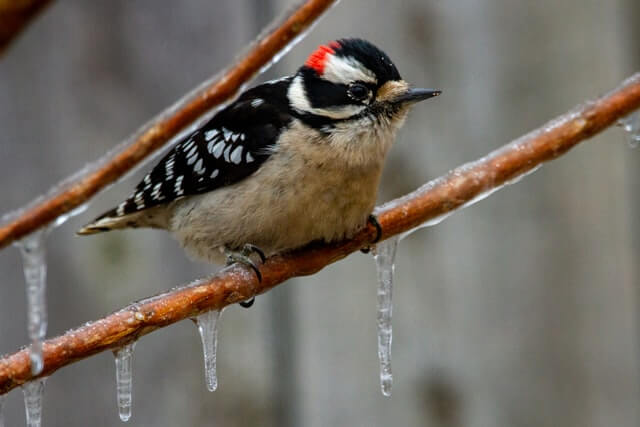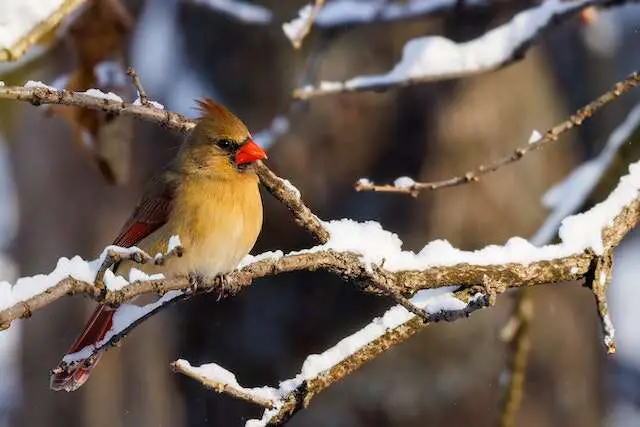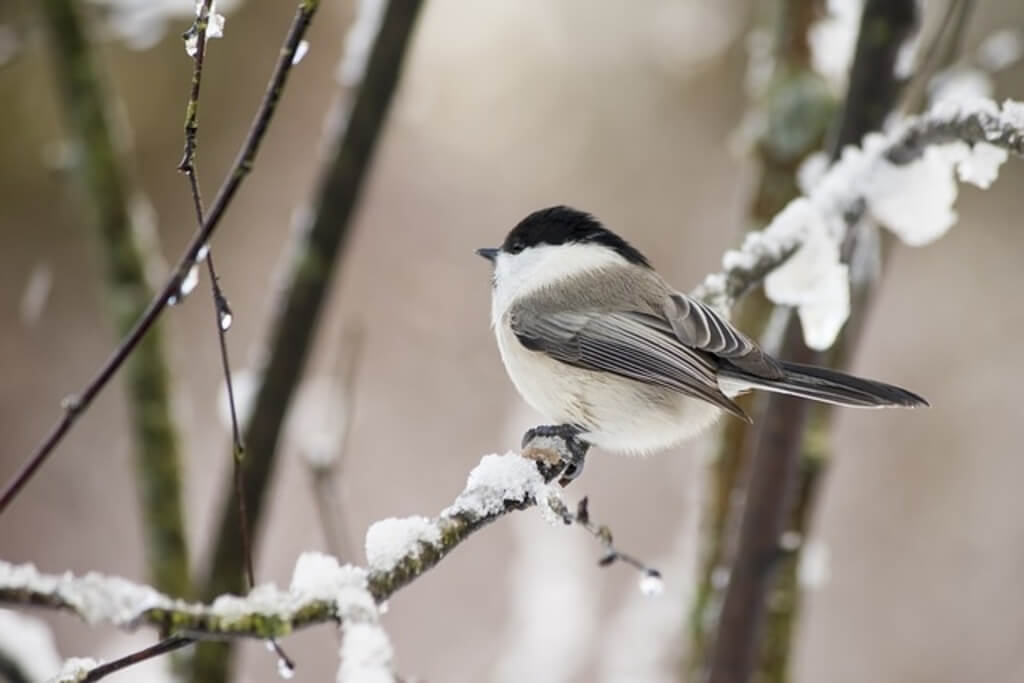How Do Birds Stay Warm in Winter? Bundle up! As the chilly winds blow and snow blankets the landscape, birds face the daunting challenge of staying warm.
But fear not, because these feathered fashionistas have mastered the art of winter survival.
From insulating feathers to cozy nests and even sunbathing techniques, our avian friends have an array of ingenious strategies.
In this article, we’ll uncover the secrets behind their remarkable adaptations and reveal how they endure the frigid conditions. Get ready to dive into the fascinating world of avian winter survival!
Table of Contents
- 1 Key Takeaways
- 2 How Do Birds Stay Warm in Winter
- 3 Insulating Feathers
- 4 Shivering and Metabolism
- 5 Roosting in Groups
- 6 Fluffing Up Feathers
- 7 Creating Cozy Nests
- 8 Seeking Shelter
- 9 Huddling Together for Warmth
- 10 Sunbathing and Basking
- 11 Adaptations in Body and Beak
- 12 Migration to Warmer Areas
- 13 Frequently Asked Questions
- 13.1 How do birds find enough food during the winter months?
- 13.2 Do birds have a specific winter diet?
- 13.3 How do birds protect their feet from freezing temperatures?
- 13.4 Do all bird species have the same ability to withstand cold temperatures?
- 13.5 Do birds build different types of nests during the winter compared to other seasons?
- 14 Conclusion
- 15 Author
Key Takeaways
- Insulating feathers, including down feathers, help birds stay warm by trapping air and creating insulation.
- Birds use various strategies to conserve body heat, such as shivering, increased metabolism, roosting in groups, and huddling together to create a microclimate for temperature regulation.
- Fluffing up feathers and preening them helps maintain insulation by creating air pockets and ensuring the feathers are in good condition.
- Nest construction provides shelter from winter elements, while natural camouflage helps birds blend in with their surroundings for added protection.

How Do Birds Stay Warm in Winter
Birds stay warm in winter through various strategies. They have insulating feathers that trap air, shiver to increase metabolism and generate heat, roost in groups to share body heat, fluff up feathers for better insulation, and create cozy nests. Migration and sunbathing are additional tactics used for warmth.
Insulating Feathers
The feather structure of birds is designed to trap air and create a layer of insulation.
Down feathers, which are soft and fluffy, are particularly effective at providing insulation due to their ability to trap more air.
This layer of insulation helps birds to conserve body heat and stay warm in cold weather.
Moving on to the next section, shivering and metabolism also contribute to their ability to stay warm.
Shivering and Metabolism
Shivering and increased metabolism are two physiological responses employed by avian species during cold weather, with some birds being capable of generating heat through muscle contractions that can increase their metabolic rate up to five times higher than their resting level.
Shivering mechanisms and other thermoregulatory strategies allow birds to maintain their body temperature and survive in harsh winter conditions.
Moving on to the next section, birds also have another effective strategy for staying warm: roosting in groups.
Roosting in Groups
Another effective strategy employed by avian species during cold weather is roosting in groups, allowing them to conserve body heat and increase their chances of survival in harsh winter conditions.
This behavior is essential for their thermal regulation, as birds can lose a significant amount of body heat in cold temperatures. By huddling together, they create a microclimate that helps maintain their body temperature.
Winter roosting spots, such as dense trees or shrubs, provide shelter from wind and precipitation.
This communal behavior sets the stage for the subsequent section on how birds further protect themselves by fluffing up their feathers.
Fluffing Up Feathers
Fluffing up their feathers, avian species employ a strategic technique to combat the biting cold of winter. Preening feathers is an essential behavior that helps birds maintain insulation.
By meticulously rearranging their feathers, birds create feather puffs that trap air and provide an additional layer of warmth.
This preening process is crucial for regulating body temperature and ensuring survival in harsh winter conditions.
Transitioning into the subsequent section, birds also create cozy nests to further protect themselves from the cold.

Creating Cozy Nests
Nest construction serves as a crucial component of avian survival during frigid winter months. Birds employ various nest building techniques to create cozy and insulated shelters.
They use a range of materials for nest insulation, such as feathers, moss, leaves, and even animal fur. These materials trap air and create a layer of insulation, keeping the nest warm.
After constructing their nests, birds seek shelter in these cozy structures to protect themselves from the harsh winter elements.
The next section will discuss the birds’ strategies for seeking shelter.
Seeking Shelter
Birds have evolved various strategies to seek shelter during winter. One such strategy is natural camouflage, where birds blend in with their surroundings, making it difficult for predators to spot them.
Additionally, birds use their body heat to stay warm. By fluffing up their feathers and creating air pockets, they create insulation that helps retain heat. This enables them to survive in cold temperatures.
However, seeking shelter is not the only way birds stay warm in winter; another method is huddling together for warmth.
Huddling Together for Warmth
One effective method for maintaining body temperature during the winter is when multiple individuals come together in close proximity, forming a tightly-knit group that provides warmth through shared body heat.
This behavior, known as huddling, is a common strategy among birds for thermal regulation and energy conservation.
Huddling allows birds to conserve energy by reducing heat loss and maintaining a stable body temperature.
In the next section, we will explore another method used by birds to stay warm in winter: sunbathing and basking.
Sunbathing and Basking
Sunbathing and basking in the winter sun provide avian species with a vital source of heat as they seek to regulate their body temperature and conserve energy.
Birds utilize these thermoregulation techniques by exposing themselves to direct sunlight, allowing their feathers to absorb heat.
Heat absorption is particularly important during the winter months, when temperatures plummet and food sources become scarce.
These behaviors allow birds to maintain their body temperature and conserve energy for other essential functions.
Moving forward, we will explore the adaptations in body and beak that further aid birds in surviving the winter.

Adaptations in Body and Beak
Birds have evolved various adaptations in their body and beak structure to stay warm in winter. They have specialized beaks that help them forage efficiently for food in cold conditions.
Additionally, birds rely on their body fat reserves to provide insulation and energy during the winter months.
These adaptations enable them to survive and maintain their body temperature in low temperatures.
Transitioning to the next section, another strategy birds employ to stay warm is migration to warmer areas.
Migration to Warmer Areas
Migration is a remarkable phenomenon where avian species embark on long journeys to seek refuge in warmer regions and escape the harsh conditions of winter.
This behavior is driven by a combination of factors, including climate change impact and food availability.
As the climate changes, birds may face altered environmental conditions and reduced food resources.
By migrating to warmer areas, they can find more favorable conditions for survival and ensure access to abundant food sources.
Frequently Asked Questions
How do birds find enough food during the winter months?
Bird migration and winter survival strategies ensure birds find enough food during the winter months. Many birds migrate to warmer regions where food is more abundant, while others rely on stored food or adapt their feeding habits to forage in colder climates.
Do birds have a specific winter diet?
Birds exhibit a variety of dietary changes and winter feeding strategies. These include consuming high-energy foods, such as seeds and berries, and scavenging for insects and small vertebrates when available.
How do birds protect their feet from freezing temperatures?
Birds’ feet have specialized adaptations to protect them from freezing temperatures in winter. These adaptations include a high density of blood vessels, counter-current heat exchange systems, and insulation from feathers and scales.
Do all bird species have the same ability to withstand cold temperatures?
Bird species vary in their ability to withstand cold temperatures, known as cold tolerance. Research indicates that some bird species have developed physiological adaptations, such as increased metabolic rates and insulation, to survive in harsh winter conditions.
Do birds build different types of nests during the winter compared to other seasons?
Birds employ varied nest-building strategies during winter as part of their migration and survival tactics. These adaptations ensure their ability to withstand cold temperatures and provide shelter, enhancing their chances of survival in harsh winter conditions.

Conclusion
In conclusion, birds employ a variety of ingenious strategies to maintain warmth during the winter months.
Their insulating feathers act as a shield, trapping air and preventing heat loss.
Birds also engage in shivering, which increases their metabolic rate and generates heat.
Roosting in groups allows them to share body heat, while fluffing up feathers creates a thicker insulation layer.
Cozy nests provide additional protection from the cold, and huddling together further enhances warmth.
Sunbathing and basking in the sun are also utilized to absorb heat.
Lastly, birds adapt their body and beak structures to withstand low temperatures.
Some birds opt for migration, seeking warmer areas during winter.
These remarkable adaptations and behaviors demonstrate the remarkable resilience and resourcefulness of avian species in the face of challenging winter conditions.
Related Articles:



